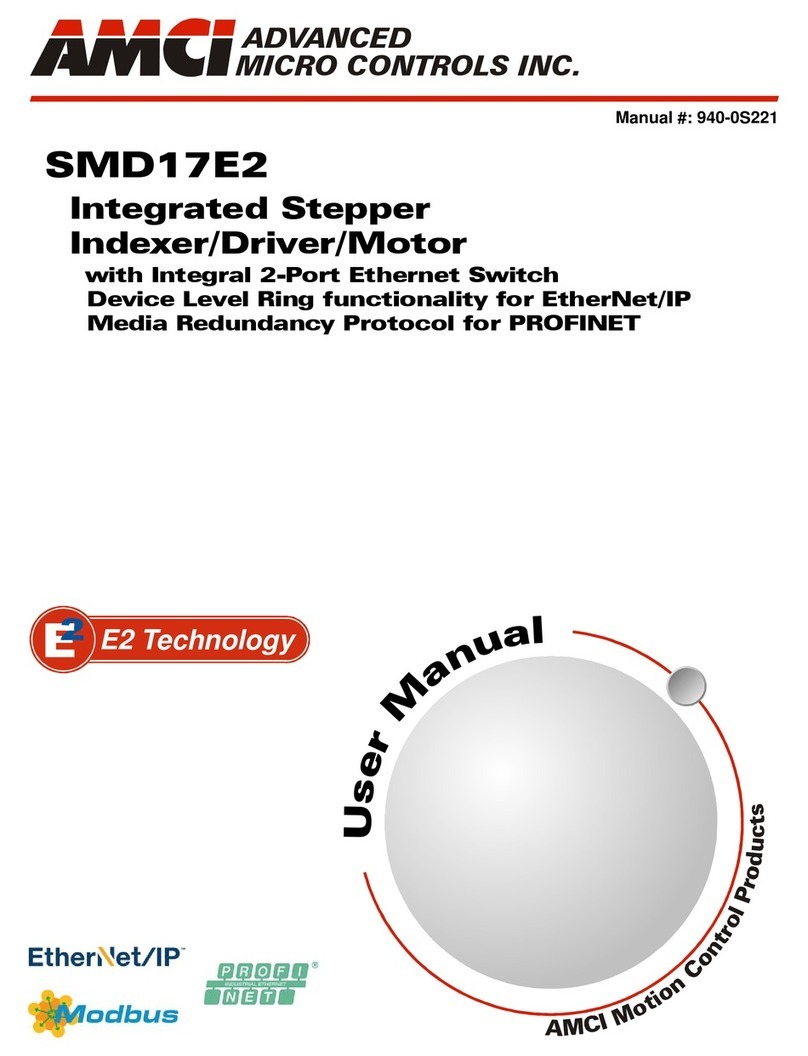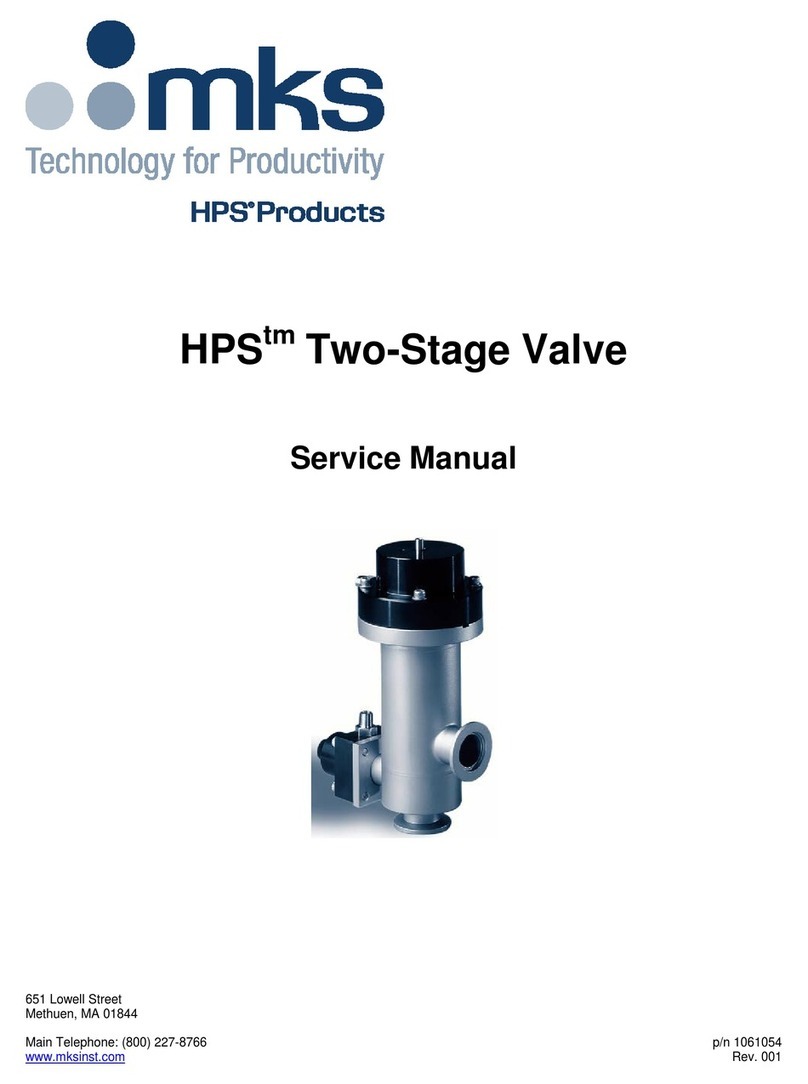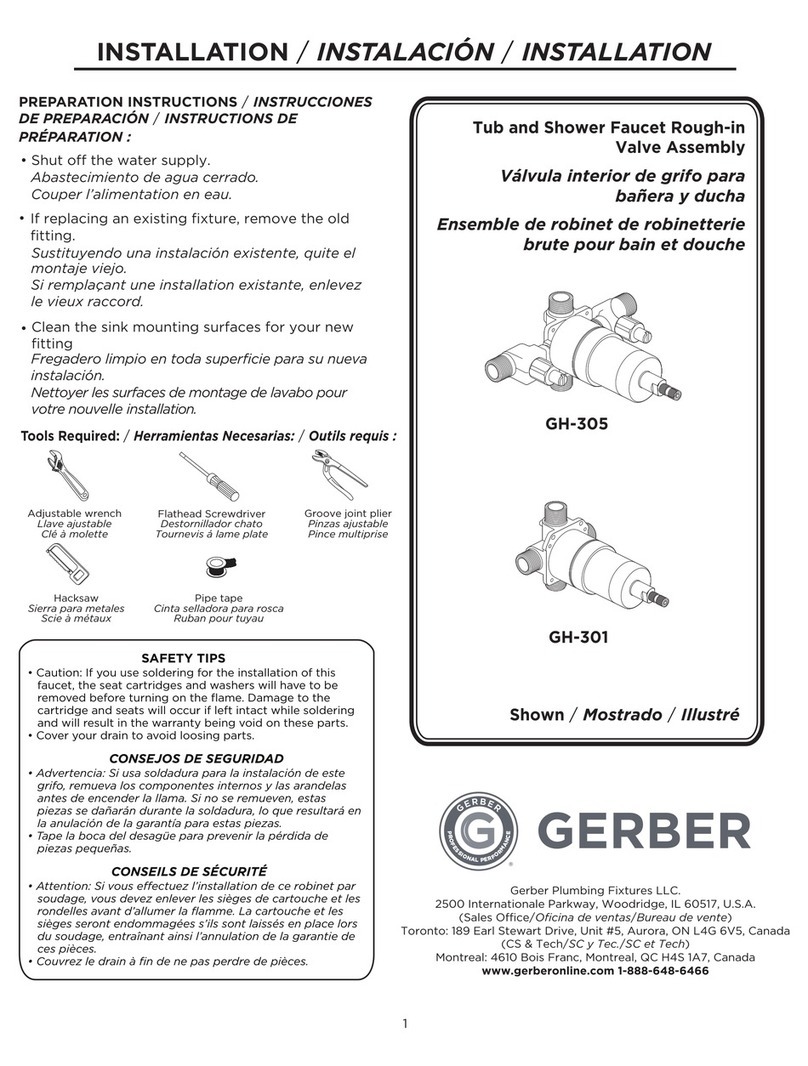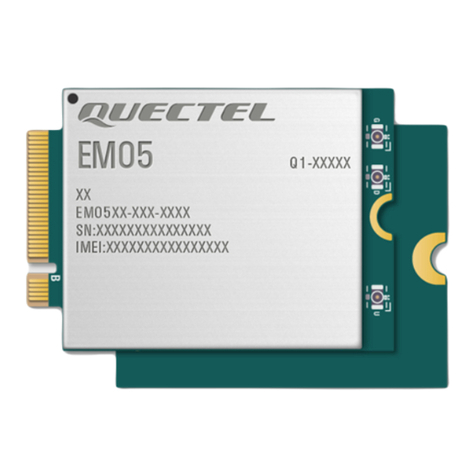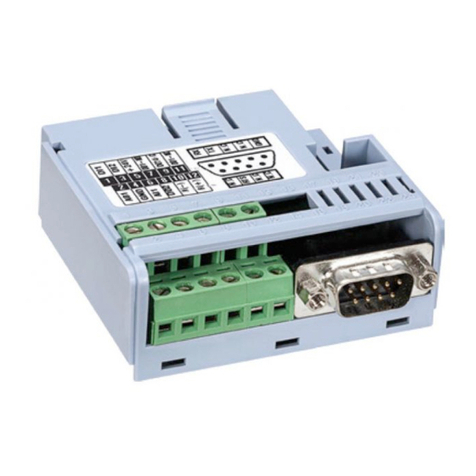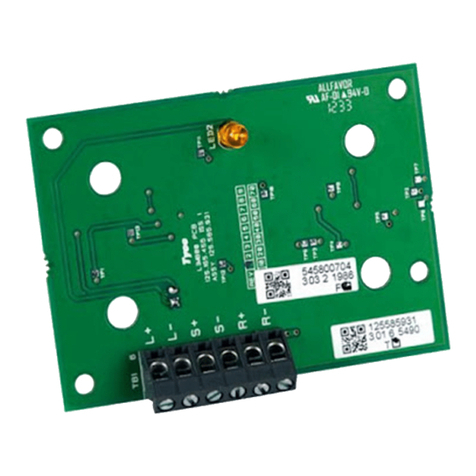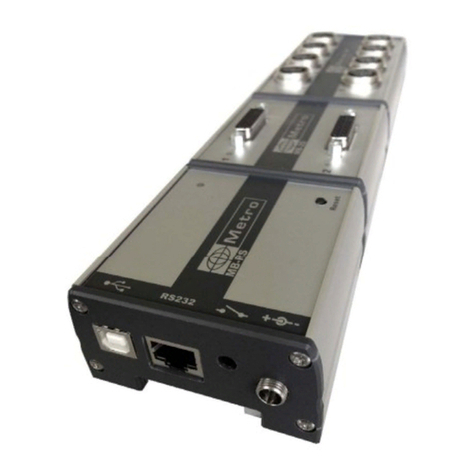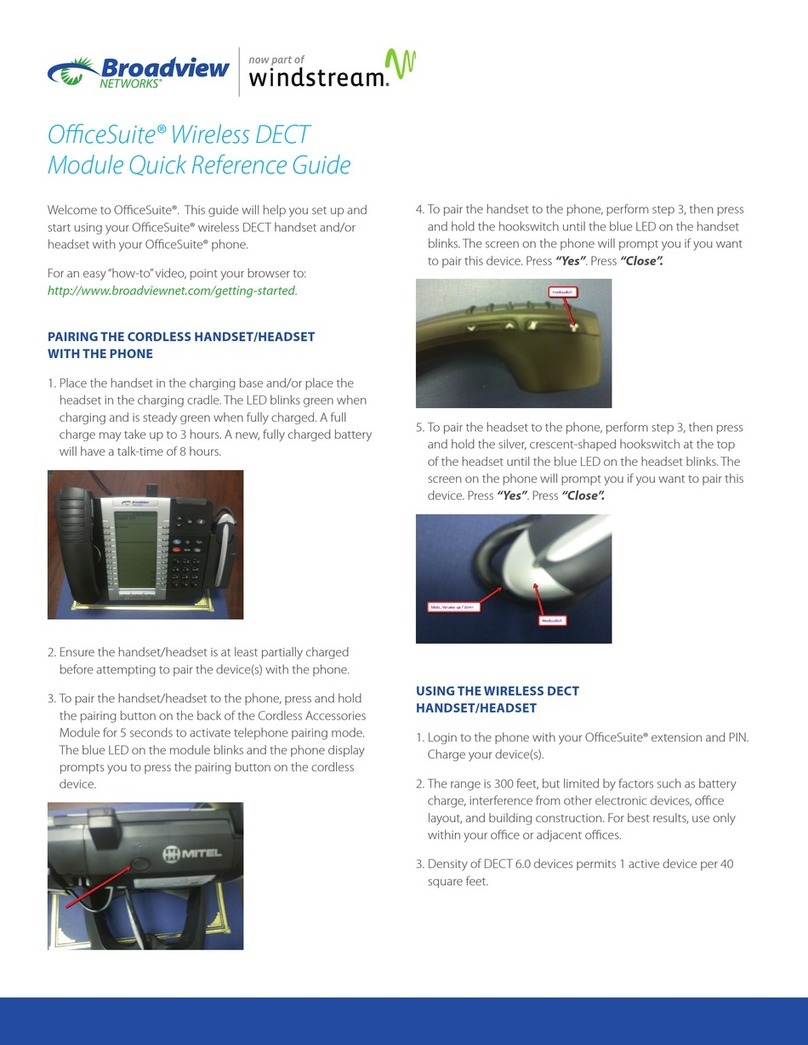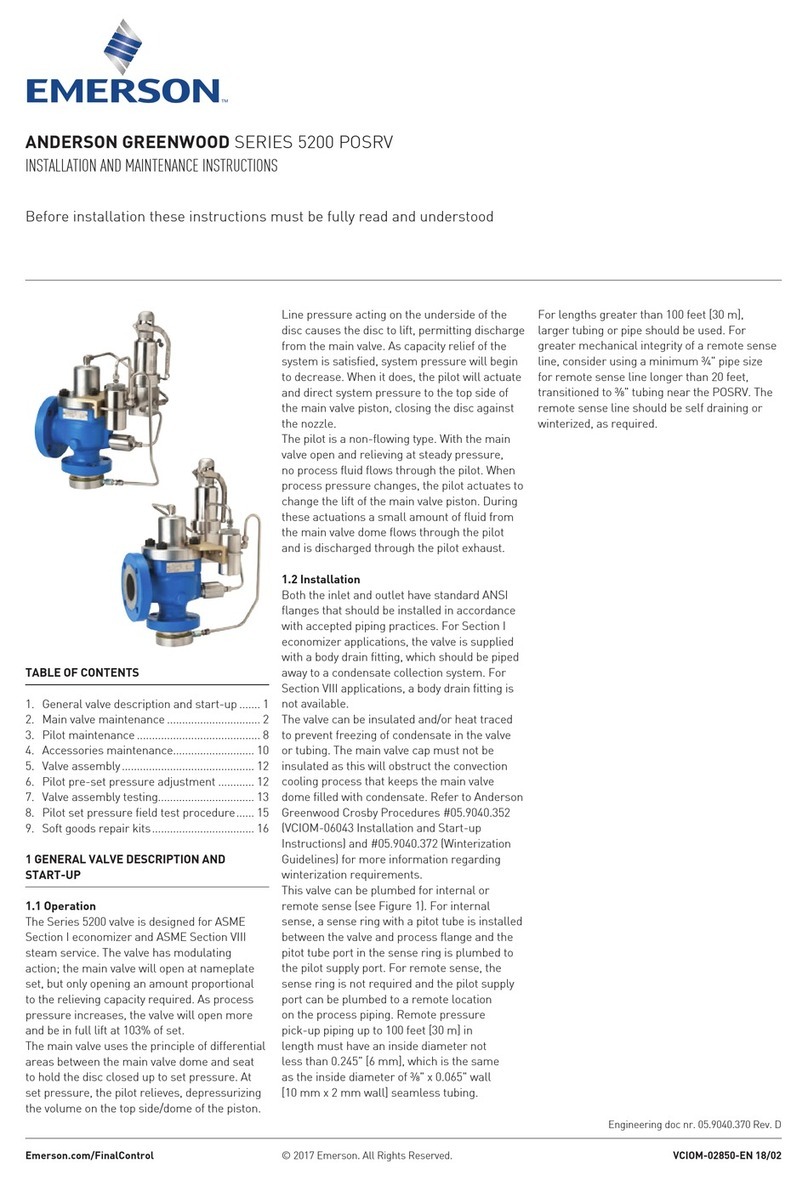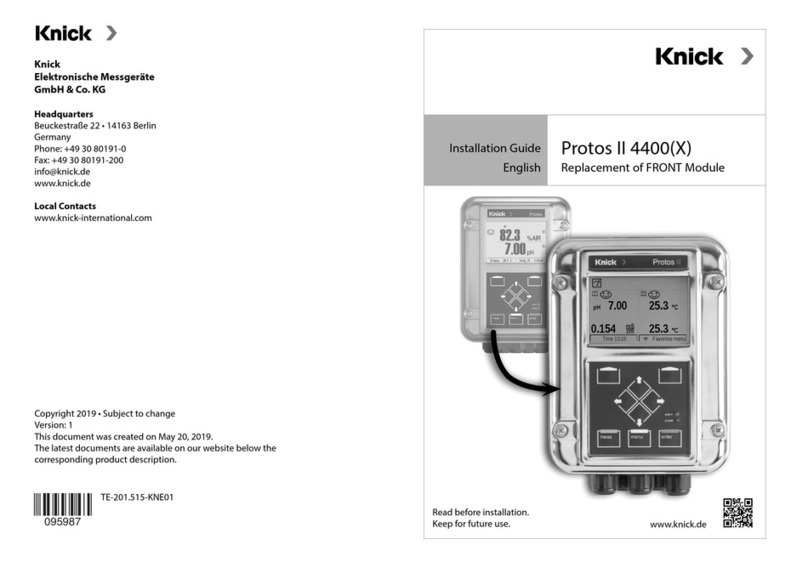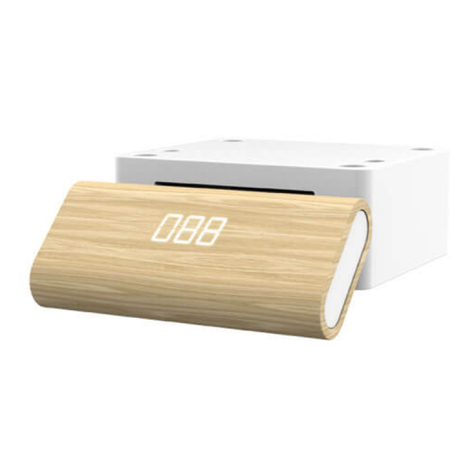Advanced Micro Controls Inc. 1700 Series User manual

Artisan Technology Group is your source for quality
new and certied-used/pre-owned equipment
• FAST SHIPPING AND
DELIVERY
• TENS OF THOUSANDS OF
IN-STOCK ITEMS
• EQUIPMENT DEMOS
• HUNDREDS OF
MANUFACTURERS
SUPPORTED
• LEASING/MONTHLY
RENTALS
• ITAR CERTIFIED
SECURE ASSET SOLUTIONS
SERVICE CENTER REPAIRS
Experienced engineers and technicians on staff
at our full-service, in-house repair center
WE BUY USED EQUIPMENT
Sell your excess, underutilized, and idle used equipment
We also offer credit for buy-backs and trade-ins
www.artisantg.com/WeBuyEquipment
REMOTE INSPECTION
Remotely inspect equipment before purchasing with
our interactive website at www.instraview.com
LOOKING FOR MORE INFORMATION?
Visit us on the web at www.artisantg.com for more
information on price quotations, drivers, technical
specications, manuals, and documentation
Contact us: (888) 88-SOURCE | sales@artisantg.com | www.artisantg.com
SM
View
Instra

Series 1700
Intelligent
Resolver Interface
Modules
Allen-Bradley
1771 I/O
Module
User Manual
Manual: 940-57011
1731
1732
1733
1734
1741
1742
1743
1744
Artisan Technology Group - Quality Instrumentation ... Guaranteed | (888) 88-SOURCE | www.artisantg.com

General Information
ADVANCED MICRO CONTROLS INC.
Important User Information
The products and application data described in this manual are useful in a wide variety of
different applications. Therefore, the user and others responsible for applying these products
described herein are responsible for determining the acceptability for each application. While
efforts have been made to provide accurate information within this manual, AMCI assumes no
responsibility for the application or the completeness of the information contained herein.
UNDER NO CIRCUMSTANCES WILL ADVANCED MICRO CONTROLS, INC. BE
RESPONSIBLE OR LIABLE FOR ANY DAMAGES OR LOSSES, INCLUDING INDIRECT
OR CONSEQUENTIAL DAMAGES OR LOSSES, ARISING FROM THE USE OF ANY
INFORMATION CONTAINED WITHIN THIS MANUAL, OR THE USE OF ANY
PRODUCTS OR SERVICES REFERENCED HEREIN.
Throughout this manual the following two notices are used to highlight important points.
WARNINGS tell you when people may be hurt or equipment may be damaged
if the procedure is not followed properly.
CAUTIONS tell you when equipment may be damaged if the procedure is not
followed properly.
No patent liability is assumed by AMCI, with respect to use of information, circuits,
equipment, or software described in this manual.
The information contained within this manual is subject to change without notice.
Standard Warranty
ADVANCED MICRO CONTROLS, INC. warrants that all equipment manufactured by it will
be free from defects, under normal use, in materials and workmanship for a period of [1]year.
Within this warranty period, AMCI shall, at its option, repair or replace, free of charge, any equip-
ment covered by this warranty which is returned, shipping charges prepaid, within one year from
date of invoice, and which upon examination proves to be defective in material or workmanship
and not caused by accident, misuse, neglect, alteration, improper installation or improper testing.
The provisions of the "STANDARD WARRANTY" are the sole obligations of AMCI and
excludes all other warranties expressed or implied. In no event shall AMCI be liable for
incidental or consequential damages or for delay in performance of this warranty.
Returns Policy
All equipment being returned to AMCI for repair or replacement, regardless of warranty
status, must have a Return Merchandise Authorization number issued by AMCI. Call (860)
585-1254 with the model number and serial number (if applicable) along with a description of
the problem. A "RMA" number will be issued. Equipment must be shipped to AMCI with
transportation charges prepaid. Title and risk of loss or damage remains with the customer until
shipment is received by AMCI.
24 Hour Technical Support Number
24 Hour technical support is available on this product. For technical support, call (860) 583-
7271. Your call will be answered by the factory during regular business hours, Monday
through Friday, 8AM - 5PM EST. During non-business hours an automated system will ask
you to enter the telephone number you can be reached at. Please remember to include your area
code. The system will page one of two engineers on call. Please have your product model
number and a description of the problem ready before you call.
Artisan Technology Group - Quality Instrumentation ... Guaranteed | (888) 88-SOURCE | www.artisantg.com

About This Manual
I
20 Gear Drive, Plymouth Ind. Park, Terryville, CT 06786
Tel: (860) 585-1254 Fax: (860) 584-1973
Introduction
This manual explains the operation, installation, programming, and servicing of eight Series
1700 Intelligent Resolver Interface Modules for the Allen-Bradley 1771 I/O programmable
controller systems. These modules are the 1731, 1732, 1733, 1734, 1741, 1742, 1743, and
1744. The other four module in this series, the 1761, 1762, 1761-21, and 1763, are covered by
the following three manuals.
hýSeries 1760 Intelligent Resolver Interface Module User Manual
hý1761-21 Intelligent Resolver Interface Module User Manual
hý
1763 Intelligent Resolver Interface Module User Manual
It is strongly recommended that you read the following instructions. If there are any unan-
swered questions after reading this manual, call the factory. An applications engineer will be
available to assist you.
AMCI is a registered trademark of Advanced Micro Controls Inc.
The AMCI logo is a trademark of Advanced Micro Controls Inc.
PLC-2, PLC-3, and PLC-5 are registered trademarks of Allen-Bradley Company.
Viton is a registered trademark of E.I. DuPont
This product is licensed under patents and proprietary technology of Allen-Bradley
Company, Inc.. Allen-Bradley Company, Inc. does not warrant or support this product in any
manner.
Manuals at AMCI are constantly evolving entities. Your questions and comments on this
manual and the information it contains are both welcomed and necessary if this manual is to be
improved. Please direct all comments to: Technical Documentation, AMCI, 20 Gear Drive,
Plymouth Industrial Park, Terryville CT 06786, or fax us at (860) 584-1973.
Revision Record
The following is the revision history for this manual. In addition to the information listed
here, revisions will fix any known typographical errors and clarification notes may be added.
This manual, 940-57011, supersedes 940-57010. It adds the outline drawings and
specifications of the H25-FL and H25-SL transducers and updates all other transducer and
cabling prints. This electronic manual corresponds to the printed version of the manual 940-
07011 and software version 8, checksum 1339 which is used on revision H+ of the main PC
board. This software revision incorporates several features into the standard products that were
only available as specialty options before. These new features are described in chapter 1:
Series 1700 Introduction. The hardware revision is a change over from through-hole to surface
mount components. Minor design enhancements were also included.
Past Revisions
940-57010: Original release of the manual. It was released in two parts, 57010A.pdf and
57010B.pdf.
Artisan Technology Group - Quality Instrumentation ... Guaranteed | (888) 88-SOURCE | www.artisantg.com

About This Manual
II ADVANCED MICRO CONTROLS INC.
Notes
Artisan Technology Group - Quality Instrumentation ... Guaranteed | (888) 88-SOURCE | www.artisantg.com

Chapter 1 Series 1700 Introduction
1-1
20 Gear Drive, Plymouth Ind. Park, Terryville, CT 06786
Tel: (860) 585-1254 Fax: (860) 584-1973
This chapter serves as an introduction to the Series 1700 modules. It highlights
the Series 1700 family members, potential applications, compatible transducers,
and all of the modules’ features, including those added since the last revision.
Overview
The Series 1700 modules are Allen Bradley 1771
I/O compliant cards that convert resolver signals to
digital position and tachometer data that can be
reported over the backplane using either block or
single transfers. The 1700 modules eliminate the
separate resolver decoder box, PLC input card, and
associated wiring needed to bring the digital data
into a PLC.
Like an absolute optical encoder, a resolver is a
sensor that converts an angle into electrical signals.
However, this is where the similarities end. The
resolver is an analog device that does not contain
sensitive components such as optics and electronics
that may be damaged by severe environmental
conditions. Also, the position resolution of a
resolver is limited only by the electronics that decode
its signals. When attached to a 1700 module, the
resolver gives an absolute position value with up to
thirteen bit position resolution over a six conductor
cable.
A 1700 module application generally falls into one of two categories.
hýRotary Application - The resolver position directly correlates to an angular position on
the machine. One example is monitoring a press ram. As the press cycles through one
turn, the resolver position is used to monitor and control such functions as material feed
and part blow-off.
hýLinear Application - The resolver position correlates to a physical length. These
applications can be either single turn or multi-turn. An example of a single turn
application is a packaging machine where the resolver completes one turn for each
product. Here the resolver position is used to control when glue is applied or when the
package is cut to length. An example of a multi-turn application is monitoring the
position of a load on either a track or ball screw. In this type of application, linear
position is translated to rotary position through either a wheel or gearing. The
transducer completes several rotations in order to travel the complete distance.
AMCI also has a line of cable reel transducers for use in linear applications. A cable
reel transducer has a stranded stainless steel cable wrapped around a spring loaded
drum. As the cable is pulled out of the transducer, the drum rotates, which in turn
rotates the internal resolver. The cable is retracted by the force of the drums' spring.
Distances of up to forty-five feet can be measured with these transducers.
Physically, the Series 1700 modules are two slot cards that have one, two, three, or four
resolver inputs, called resolver, or transducer, channels. Their integral keyboard and display
allow you to setup the module and monitor position and tachometer data.
Figure 1.1 1700 Module & HT-20
Artisan Technology Group - Quality Instrumentation ... Guaranteed | (888) 88-SOURCE | www.artisantg.com

Chapter 1 Series 1700 Introduction
1-2 ADVANCED MICRO CONTROLS INC
Overview (continued)
All of the modules have programmable Transducer Setup Parameters that allow you to
scale and adjust the position and tachometer data. Additional Module Setup Parameters define
the type of transducer attached to the module, the digital format of the position and tachometer
data, and how the module communicates this data to the processor. The module can be
configured to use either block or single transfers.
When configured to use block transfers, you can further configure the module to accept
programming instructions and commands over the backplane. With backplane programming
enabled, you can read back parameter values instead of position and tachometer data by
entering Read Status Mode.
Series 1700 Family Members
The twelve modules in the 1700 series are shown in the table below. The shaded out models
are multi-turn modules not covered in this manual. Refer to About this Manual, pg. I
Introduction, for more information on the manuals for these modules.
Model Transducer
Inputs Resolution
1731 110 bit (1,024 counts)
1732 210 bit (1,024 counts)
1733 310 bit (1,024 counts)
1734 410 bit (1,024 counts)
1741 113 bit (8,192 counts)
1742 213 bit (8,192 counts)
1743 313 bit (8,192 counts)
1744 413 bit (8,192 counts)
1761 112 bit (4,096) per turn, 180 turns max. (737,280 counts max.)
1761-21 112 bit (4,096) per turn, 180 turns max. (737,280 counts max.)
Reset input. Programmable to fractional number of turns.
1762 212 bit (4,096) per turn, 180 turns max. (737,280 counts max.)
1763 110 bit (1,024) per turn, 10,000 turns max. (10,000,000 counts max.)
Table 1.1 Series 1700 Family Members
The 1730 and 1740 modules covered by this manual are primarily intended for single turn
applications. They can be used in multi-turn applications by placing a gear ratio between the
output shaft of the machine and the transducer. AMCI has a line of transducers with an inter-
nal (x):1 ratio for use in these applications. However, you must remember that the maximum
number of counts remains fixed at either 1,024 or 8,192 counts. If you need higher resolution,
you must use a 1760 module. These modules provide up to 4,096 counts per turn over a
maximum of 180 turns. (737,280 counts max.)
See pg. 1-4, AMCI Compatible Transducers, for more information on the single and multi-
turn transducers available from AMCI for use with the 1730 and 1740 modules.
Artisan Technology Group - Quality Instrumentation ... Guaranteed | (888) 88-SOURCE | www.artisantg.com

Chapter 1 Series 1700 Introduction
1-3
20 Gear Drive, Plymouth Ind. Park, Terryville, CT 06786
Tel: (860) 585-1254 Fax: (860) 584-1973
Brushless Resolver Description
The brushless resolver is unsurpassed by any other type of rotary position transducer in its
ability to withstand the harsh industrial environment. An analog sensor that is absolute over a
single turn, the resolver was originally developed for military applications and has benefited
from more than 50 years of continuous use and development.
The resolver is essentially a rotary transformer with one important distinction. The energy
coupled through a rotary transformer is not affected by shaft position whereas the magnitude of
energy coupled through a resolver varies sinusoidally as the shaft rotates. A resolver has one
primary winding, the Reference Winding, and two secondary windings, the SIN and COS
Windings. (See figure 1.2, Resolver Cut away View). The Reference Winding is located in
the rotor of the resolver, the SIN and COS Windings in the stator. The SIN and COS Windings
are mechanically displaced 90 degrees from each other. In a brushless resolver, energy is
supplied from the Reference Winding to the rotor by a rotary transformer. This eliminates
brushes and slip rings in the resolver and the reliability problems associated with them.
In general, the Reference Winding is excited by an AC voltage called the Reference Voltage
(VR). (See figure 1.3, Resolver Schematic). The induced voltages in the SIN and COS
Windings are equal to the value of the Reference Voltage multiplied by the SIN or COS of the
angle of the input shaft from a fixed zero point. Thus, the resolver provides two voltages
whose ratio represents the absolute position of the input shaft. (SIN θ/ COS θ= TAN θ, where
θ= shaft angle.) Because the ratio of the SIN and COS voltages is considered, any changes in
the resolvers’ characteristics, such as those caused by aging or a change in temperature, are
ignored.
θ
VR
R1 (Red/Wht)*
R2 (Blk/Wht)
COS
Winding
S4 (Blu)
S2 (Yel)
S3 (Blk)
S1 (Red)
SIN
Winding
VC= VRCOSθ
Rotary
Transformer VS= VRSINθ
*(Wire Color)
Reference Winding
SIN and COS Windings
Rotary
Transformer
Figure 1.2 Resolver Cut away View Figure 1.3 Resolver Schematic
Artisan Technology Group - Quality Instrumentation ... Guaranteed | (888) 88-SOURCE | www.artisantg.com

Chapter 1 Series 1700 Introduction
1-4 ADVANCED MICRO CONTROLS INC
AMCI Compatible Transducers
Table 1.2 lists the AMCI transducers compatible with the 1700 modules.
Model Shaft Mount Turns Comments
R11X-J10/7 0.120” Servo 1 NEMA 1, size 11 resolver
R11X-J12/7 0.188” Servo 1NEMA 1, size 11 resolver
HT-6 0.188” Front/Side 1 NEMA 13 R11X-J12/7 transducer
HT-20 0.625" Front/Side 1 NEMA 13 heavy duty transducer
HT-20S 0.625" Front/Side 1 HT-20 w/ side mounted connector.
HT-20C 0.625" Front/Side 1 NEMA 4X, stainless steel HT-20, w/ Viton®shaft seal,
conduit connector.
HT-20K 0.625" Front/Side 1 NEMA 4X, stainless steel HT-20, w/ Viton shaft seal.
HT-20L 0.625" Front/Side 1 NEMA 4X, stainless steel HT-20, w/ Nitrile shaft seal.
H25-FE 0.375” Flange 1 NEMA 4, size 25, end connector
H25-FS 0.375” Flange 1 NEMA 4, size 25, side connector
H25-FL 0.375” Flange 1 NEMA 4, size 25, integral 15 foot (3 meter) cable
H25-SE 0.375” Servo 1NEMA 4, size 25, end connector
H25-SS 0.375” Servo 1 NEMA 4, size 25, side connector
H25-SL 0.375” Servo 1NEMA 4, size 25, integral 15 foot (3 meter) cable
HT-400,
HT-400A,
HT-400B
0.625" Front/Side 1 NEMA 4, HT-20 Bolt-in replacement for Autotech
RL100 transducers. Conduit, Autotech connector, or
AMCI connector styles available.
HT-20-(X) 0.625" Front (X)† HT-20 w/ internal (X):1 gear ratio
HTT-20-1 0.625" Front 1 Redundant single turn resolvers‡
HTT-400-1 0.625" Front 1Redundant single turn resolvers‡, Bolt-in replacement
for Autotech RL220 transducers.
HTCR-9n-1 0.047"
Cable Foot 12" Cable Reel Transducer, 12" span, 0.003" max.
resolution, 45 ft stranded stainless cable standard.
HTCR-9n-6 0.047"
Cable Foot 76" Cable Reel Transducer, 76" span, 0.010" max.
resolution, 45 ft stranded stainless cable standard.
HTCR-9n-20 0.047"
Cable Foot 254" Cable Reel Transducer, 254" span, 0.032" max.
resolution, 45 ft stranded stainless cable standard.
† Available gear ratios are: 2:1, 2.5:1, 2.77:1, 3:1, 4:1, 4.8:1, 5:1, 6:1, 7:1, 8:1, 9:1, 10:1, 12:1, 13:1, 15:1,
16:1, 20:1, 24:1, 36:1, 40:1, 50:1, 60:1, 64:1, 100:1, 105:1, 150:1,180:1, 250:1 and 256:1
‡ This package contains two resolvers geared 1:1 with the input shaft. Most commonly used in systems that
mandate redundant sensors, AMCI can install two different size 11 resolvers in the package per customer
requirements. Contact AMCI for more information.
Table 1.2 Compatible AMCI Transducers
Artisan Technology Group - Quality Instrumentation ... Guaranteed | (888) 88-SOURCE | www.artisantg.com

Chapter 1 Series 1700 Introduction
1-5
20 Gear Drive, Plymouth Ind. Park, Terryville, CT 06786
Tel: (860) 585-1254 Fax: (860) 584-1973
Other Compatible Transducers
In addition to AMCI transducers, the 1700 modules directly support Autotech transducers.
The Autotech models supported are:
hýAll SAC-RL100 Transducers. (Size 40, NEMA 13)
hýAll E6R and E7R-RL101 Transducers. (Size 25, NEMA 13)
hý
SAC-RL101-010 Transducer. (Size 11, NEMA 1)
If your project is a new installation, or you can budget the cost of replacing the transducer,
we strongly suggest using AMCI transducers. AMCI is the only company in the marketplace
that designs and manufactures the resolvers used in its products. Our transducers and modules
are designed to work together, and when specified and installed properly will work for years to
come.
If your project involves converting system originally designed for Autotech products you
can most likely use AMCI transducers without re-designing transducer mounting brackets.
Table 1.3 lists Autotech transducer part numbers and the AMCI bolt-in replacements. Note
that the resolvers used in AMCI transducers are for AMCI products and all connectors are
AMCI standard connectors, unless otherwise stated.
Autotech
Transducer AMCI
Transducer Comments
SAC-RL101-010 R11X-J10/7 Mechanically identical except that wires come out
the back instead of the side.
E6R-RL101-000EF
E7R-RL101-000EF H25-FE Bolt-in replacement. Shorter body length.
E6R-RL101-000ES
E7R-RL101-000ES H25-SE Bolt-in replacement when servo mounting.
Different bolt pattern on front, shorter body.
E6R-RL101-000SF
E7R-RL101-000SF H25-FS Bolt-in replacement. Shorter body length, side
connector in different location.
E6R-RL101-000SS
E7R-RL101-000SS H25-SS Bolt-in replacement when servo mounting.
Different bolt pattern on front, shorter body
length, side connector in different location.
SAC-RL100-010 HT-400-1 Direct replacement.
SAC-RL100-M11 HT-400A-1
HT-400B-1 Direct replacement, Autotech connector.
Direct replacement, AMCI connector.
SAC-RL220-G010C HTT-400-1 Direct replacement.
SAC-RL220-G010M HTT-400A-1
HTT-400B-1 Direct replacement, Autotech connector.
Direct replacement, AMCI connector.
Table 1.3 Autotech / AMCI Transducer Cross-reference
If you decide to use your Autotech transducers, you must change the Resolver Type
parameter from the keyboard or processor. The module then sets the reference voltage to
Autotech levels. If you set the Resolver Type to Autotech and you are using a multi-channel
module, then all of the transducers must be Autotech’s. If you wish to bring both types of
transducers into a single module, you must set the Resolver Type parameter to AMCI and use
an AMCI RM-3 Reference Module to connect the Autotech transducers. For more information
on using AMCI and Autotech transducer, refer to chapter 3, pg. 3-13, Using AMCI and
Autotech Transducers Together.
Artisan Technology Group - Quality Instrumentation ... Guaranteed | (888) 88-SOURCE | www.artisantg.com

Chapter 1 Series 1700 Introduction
1-6 ADVANCED MICRO CONTROLS INC
The remainder of this chapter introduces the many programmable features of the
1700 modules. It also introduces backplane programming concepts that allows
you to control the module from the processor instead of using the modules
keyboard and display.
Programmable Parameters
A 1700 module is configured by setting its programmable parameters. Parameters are
broken into two groups.
hý
Transducer Setup Parameters - Six parameters that affect the position and
tachometer data of each transducer. Multi-channel modules repeat these parameters
for each transducer. For example, if you have a four channel module, you will have
four Scale Factor parameters, one for each transducer. These parameters are
programmable from the keyboard or the processor.
hý
Module Setup Parameters - Five parameters that sets module communication with
the processor and the type of resolvers attached to the card. There is only one of each
of these parameters. They are not repeated for each transducer of multi-channel
modules. They are programmable only from the keyboard.
Programmable parameters are stored in the modules nonvolatile memory. Therefore, you do
not have to configure the module after every power up. Prior to hardware revision H of the
module, the nonvolatile memory was EEPROM. This technology has the advantage of
retaining programmed values for over 100 years. Its disadvantage is its limited number of write
cycles, approximately ten thousand, before the memory will begin to fail.
With revision H, the nonvolatile memory has been changed to battery backed, non-volatile,
static RAM (nvRAM). The battery in nvRAM is rated for ten years but the nvRAM has an
unlimited number of write cycles. The nvRAM has the additional advantage of significantly
decreasing the time needed to store new parameter values.
-05 option
Prior to hardware revision H, customers could order modules with nvRAM instead of
EEPROM by adding “-05” to the end of the part number. This practice has been eliminated
because nvRAM is now standard on the modules. If your module is a replacement for an older
“-05” module, it will work correctly.
Artisan Technology Group - Quality Instrumentation ... Guaranteed | (888) 88-SOURCE | www.artisantg.com

Chapter 1 Series 1700 Introduction
1-7
20 Gear Drive, Plymouth Ind. Park, Terryville, CT 06786
Tel: (860) 585-1254 Fax: (860) 584-1973
Transducer Setup Parameters
Tachometer Response
This parameter sets the time between tachometer updates and the tachometers resolution.
Update times are 32, 60, 120, or 240 mSec. The two resolutions, available only with the
240 mSec update time, are 1.0 or 0.1 RPM.
hýThe tachometer response default value is 240 mSec with 1.0 RPM resolution.
Update time affects the maximum speed that the module can report without error. If the
speeds listed in the table below are exceeded, the module will display erroneous data as well as
send it to the processor.
Update Time Resolution Max. Speed
32 mSec 1.0 RPM 5000 RPM
60 mSec 1.0 RPM 5000 RPM
120 mSec 1.0 RPM 5000 RPM
240 mSec 1.0 RPM 5000 RPM
240 mSec 0.1 RPM 999.9 RPM
Table 1.4 Maximum Tachometer Values
Scale Factor
The Scale Factor sets the number of counts per turn of the resolver.
hýThe Scale Factor default value is 360. This gives 1 degree resolution.
hý1730 modules can program the Scale Factor to any value between 2 and 1024.
hý1740 modules can program the Scale Factor to any value between 2 and 8192.
Count Direction
This new parameter sets the direction of transducer shaft rotation to increase the position
count. If the transducer cable is wired as specified in this manual and the count direction is set
to positive, the position count will increase with clockwise rotation (looking at the shaft). If the
count direction is set to negative, the position count to increase with counter-clockwise
rotation.
hýThe Count Direction default value is positive.
It is also possible to reverse the count direction by reversing two wires in the
transducer cable. If you are installing this module either as a replacement for
an older module or on a machine that is a copy installation of a previous
system, you will probably not need to set this parameter. Once the machine is
setup, you can easily change this parameter if the position is increasing in the
wrong direction.
Artisan Technology Group - Quality Instrumentation ... Guaranteed | (888) 88-SOURCE | www.artisantg.com

Chapter 1 Series 1700 Introduction
1-8 ADVANCED MICRO CONTROLS INC
Transducer Setup Parameters (continued)
Circular Offset
The Circular Offset lets you change the position count without rotating the transducer shaft.
This offset is most commonly used to force the position to the correct count after the machine
has been mechanically aligned.
hýThe Circular Offset default value is zero.
hýThe Circular Offset can be programmed from zero to (Scale Factor -1).
hýProgramming the Scale Factor resets the Circular Offset to zero.
The Preset Value parameter is directly related to the Circular Offset. Presetting
the position count to the Preset Value is accomplished by recalculating the
Circular Offset. For more information on the Preset Value parameter, see its
section below.
Linear Offset
The Linear Offset changes the range of position counts by adding a fixed number to it. The
Linear Offsets use is best illustrated with an example.
A 1741 is used to measure a 5.000 meter span with one milli-
meter resolution. Therefore, the total number of counts over the
full travel is:
5.000 meters * 1000 mm/meter = 5000 counts.
The Scale Factor parameter is then set to this value. The 5.000
meters that the transducer measures is in the range of 2.500 to
7.500 meters on the machine. You can use the Linear Offset to
force the module to send the position data to the processor in the
correct format instead of using the processor to add an offset once
the position value is in the data table. The formula for the Linear
Offset is:
Minimum Desired Value * Resolution = Linear Offset
2.500 meters * 1000 mm/meter = 2500 counts
hýThe Linear Offset default value is zero.
hýThe Linear Offset can be programmed from zero to (9,999 - (Scale Factor -1)).
hýProgramming the Scale Factor resets the Linear Offset to zero.
Preset Value
The Preset Value parameter allows you to set the value of position count without calculating
the required offset. Programming the Preset Value does not change the position data, it only
sets the value that the position will change to when a Preset Command is initiated. The
position can be preset from the keyboard or with a backplane command.
hýThe Preset Value defaults to zero.
hýThe Preset Value can be programmed from zero to (Scale Factor - 1).
hýProgramming the Scale Factor resets the Preset Value to zero.
hýIf the Linear Offset value is not equal to zero, the new position value will be (Linear
Offset + Preset Value) after it is preset.
0 m
.581 in
Linear
Offset
2.5 m
7.5 m
1.162 in
5 m
Span
Figure 1.4
Linear Offset
Example
Artisan Technology Group - Quality Instrumentation ... Guaranteed | (888) 88-SOURCE | www.artisantg.com

Chapter 1 Series 1700 Introduction
1-9
20 Gear Drive, Plymouth Ind. Park, Terryville, CT 06786
Tel: (860) 585-1254 Fax: (860) 584-1973
Module Setup Parameters
Data Format
This parameter allows you to choose the format of the position and tachometer data reported
over the backplane. The choices are Binary or BCD. It is included for PLC-2 users that require
BCD data for PLC-2 math instructions. All other applications should chose Binary data format.
hýThe Data Format parameter default value is Binary.
hýThe Data Format parameter can only be changed from the keyboard.
1) AMCI uses the most significant bit of the position and tachometer data
words as error bits. Therefore, the maximum position value that can be
transmitted in BCD is 7,999. If the sum: (Linear Offset + Scale Factor) is
greater than 8,000, the module will lock the Data Format parameter to its
Binary value. You will not be able to change the Data Format parameter
until you decrease the value of either the Linear Offset or Scale Factor.
2) The 1731 and 1741 transfer their data using either block or single transfers.
If you select single transfers, the Data Format parameter is locked to Binary.
Transfer Type
If you have a 1731 or 1741 module, this parameter allows you to define how the module
will communicate over the backplane. You select either block or single transfer. All multi-
channel modules have this parameter locked to the block transfer value.
hýThe Transfer Type default value is block transfer.
hýThe Transfer Type can only be changed from the keyboard.
1) If you configure the module for single transfers, you will not be able to
program the Transducer Setup Parameters from the backplane.
2) If you configure the module for single transfers, the Data Format parameter
will be locked to its Binary value
3) After changing this parameter, you must cycle power to the module to
reinitialize the A-B backplane interface chip.
PLC Program
The PLC Program parameter tells the module to accept or ignore programming instructions
from the backplane. This parameter is only available if you have selected block transfers with
the Transfer Type parameter. If you selected single transfers, the Single Transfer Length
parameter is shown instead.
hýThe PLC Program default value, read only, prevents the module from accepting
programming instructions. In order to enable backplane programming, you must set
the parameter to program enabled.
hýThe PLC Program parameter is only programmable from the keyboard.
1) When backplane programmable, the module requires an additional word in
its block transfer read file. Because of this, you may have to modify your
existing data file sizes as well as your ladder logic if upgrading your system.
2) After changing this parameter, you must cycle power to the module to re-
initialize the A-B backplane interface chip.
Artisan Technology Group - Quality Instrumentation ... Guaranteed | (888) 88-SOURCE | www.artisantg.com

Chapter 1 Series 1700 Introduction
1-10 ADVANCED MICRO CONTROLS INC
Module Setup Parameters (continued)
Single Transfer Length
The Single Transfer Length parameter is a new parameter used to specify either a 16 or 32
bit transfer. This parameter is only available if you have selected single transfers with the
Transfer Type parameter. If you selected block transfers, the PLC Program parameter is shown
instead.
hýThe Single Transfer Length default is 16 bit. This allows the transfer of position data
only. Setting the parameter to 32 bit allows the transfer of both the position and
tachometer data.
hýThe Single Transfer Length parameter is only programmable from the keyboard.
1)If the Single Transfer Length parameter is set to 16 bit, the chassis can be
configured for 2-slot, 1-slot, or ½-slot addressing. If the parameter is set to
32 bit, you must use 1-slot or ½-slot addressing.
2) After changing this parameter, you must cycle power to the module to re-
initialize the A-B backplane interface chip.
-08 option
Prior to hardware revision H, customers could order modules with 32 bit single transfer by
adding “-08” to the end of the part number. This practice has been eliminated because 32 bit
single transfer is now standard on the modules. If your module is a replacement for an older
“-08” module, it will work correctly if the Transfer Type parameter is set to single and the
Single Transfer Length parameter is set to 32 bit.
Resolver Type
The Resolver Type parameter is a new parameter that makes most Autotech transducers
compatible with the Series 1700 modules.
hýThe Resolver Type default value is AMCI, resolver 1. If you are using Autotech
transducers, set this parameter to resolver 2.
hýThe Resolver Type parameter is only programmable from the keyboard.
If you plan to use both AMCI and Autotech resolvers with a single module you
must set the Resolver Type to AMCI, resolver 1. You will need an RM-3
Reference Module to interface the Autotech transducers with the card. See
Chapter 3, pg. 3-13, Using AMCI and Autotech Transducers Together for more
information on using an RM-3.
Artisan Technology Group - Quality Instrumentation ... Guaranteed | (888) 88-SOURCE | www.artisantg.com

Chapter 1 Series 1700 Introduction
1-11
20 Gear Drive, Plymouth Ind. Park, Terryville, CT 06786
Tel: (860) 585-1254 Fax: (860) 584-1973
Backplane Programming
When a Series 1700 module is configured to use block transfers, you have the option of
programming the module using data sent to it by block transfer writes. (See Transfer Type
Parameter and PLC Program Parameter sections, pgs. 1-8, 1-9.) The programming format is a
series of Program Instructions as shown below. Block transfers can transmit a maximum of
sixty-four words. However, this does not limit how many parameters you can program at one
time.
hýEach program instruction is made up
of a Command Word and zero or
more Data Words.
hýAll transducer setup parameters can
be programmed from the backplane.
Module setup parameters cannot be
programmed from the backplane.
hýThere are nine additional program
instructions called Auxiliary
Commands. These commands do
not have data associated with them
and allow you to preset the position,
enable or disable programming from
the keyboard, clear programming
errors and transducer faults, and
enter or exit Read Status Mode.
Four additional commands are
enabled when the module is in read
status mode. Use these commands
to tell the module which parameter
values to transmit to the PLC instead
of position and tachometer data.
Auxiliary Commands
Auxiliary Commands affect the operation of the module and do not have data associated
with them. There are nine commands.
hýClear Errors - This command clears any programming error messages and any
transducer faults.
hýPreset Transducer (1-4) - These four commands set the position count of
transducer (1-4) equal to the programmed preset value.
hýDisable Keyboard - Disables all programming from the keyboard. Parameter
values can be monitored but they cannot be changed.
hýEnable Keyboard - This command counteracts a previous Disable Keyboard
command. The status of the keyboard disable is retained when power is removed.
The only way to enable the keyboard after a Disable Keyboard command has been
accepted is with this command.
COMMAND WORD
First Data Word
Last Data Word
COMMAND WORD
COMMAND WORD
First Data Word
Last Data Word
Last Command or DataWord
PROGRAM
INSTRUCTION
PROGRAM
INSTRUCTION
PROGRAM
INSTRUCTION
Figure 1.5 1700 Programming Structure
Artisan Technology Group - Quality Instrumentation ... Guaranteed | (888) 88-SOURCE | www.artisantg.com

Chapter 1 Series 1700 Introduction
1-12 ADVANCED MICRO CONTROLS INC
Auxiliary Commands (continued)
hý
Enter Read Status Mode - This command puts the module in read status mode.
While in this mode, the module will transmit parameter values instead of position
and tachometer data. Four additional commands are enabled while in this mode that
allow you to specify which parameter values are to be read back.
hý
Exit Read Status Mode - This command places the module back into its normal
mode of operation. Position and tachometer data will be transmitted after this
command is accepted.
Read Status Mode
This special mode of operation allows you to read back the transducer setup
parameter values. Position and tachometer data is not transmitted while in this
mode.
Because the block transfer read length from a 1700 module is fixed, it is not to read back all
of the parameter values with a single block transfer. For this reason, four additional commands
are enabled while in this mode. These commands allow you to specify which parameters are to
be read back. Once specified, the parameter values will be transmitted with every block
transfer read until new parameters are specified or you exit read status mode.
For more information on read status mode, refer to Chapter 6, Backplane Programming.
Artisan Technology Group - Quality Instrumentation ... Guaranteed | (888) 88-SOURCE | www.artisantg.com

Chapter 2 Module Description
2-1
20 Gear Drive, Plymouth Ind. Park, Terryville, CT 06786
Tel: (860) 585-1254 Fax: (860) 584-1973
This chapter describes the physical layout of a Series 1700 module as well as
keyboard programming.
Front Panel Description
Program Switch - (On other side of PC
Board, hidden from view.) Used to
enable programming the module from the
keyboard. A two pin header next to the
switch can be removed to disable Program
Mode. The switch can also be disabled
from the processor.
Function Display - Used to display position
data and parameter values. The eight LED
indicators designate what is showing on the
display. When programming a parameter,
a blinking digit in the display shows the
position of the Cursor.
Status Indicators - Indicates the operating
status of the module.
PRG - Yellow light is on when the module is in
Program Mode.
RUN - Green light is blinking when the module
is operating.
FAULT - Red light is on when there is a module
fault. The type of fault is shown on
the display.
Keyboard - Used to examine position and
tachometer data as well as examine or
change the programming of the module.
Transducer Input Connector - Connector for
one to four transducers. A fourteen pin
connector is shown. The 1731, 1732,
1741, and 1742 modules have an eight pin
connector.
Figure 2.1 Series 1700 Front Panel
Artisan Technology Group - Quality Instrumentation ... Guaranteed | (888) 88-SOURCE | www.artisantg.com

Chapter 2 Module Description
2-2 ADVANCED MICRO CONTROLS INC
Program Mode vs. Display Mode
The front panel has two operating modes.
hýProgram Mode –(Yellow PRG light on) The parameters can be modified from
the keyboard. The position can be preset by pressing the
>CLEAR@key while displaying the position value.
hýDisplay Mode –(Yellow PRG light off) The parameters can be inspected, but not
modified. You cannot preset the position from the keyboard.
Program Mode and Display Mode refer to the modules’ front panel only. Once enabled by
setting the Transfer Type and PLC Program parameters appropriately, you can always program
the module from the backplane.
The module can be locked into Display Mode in one of two ways. The first is by removing
a jumper on the module. The second is writing the Disable Keyboard auxiliary command from
the processor. It is usually good practice to lock the module in display mode once the system is
operational. This will prevent someone from accidentally changing the parameters while the
system is running. The only times that changes to the programming should be allowed are
during set-up or trouble shooting procedures.
Program Switch
The Program Switch is used to quickly enable or
disable program mode as long as the 1700 module
has not been locked in display mode from the
processor. The module is in program mode when
the switch is pushed towards the back of the
module. The module is in display mode when the
switch is pushed towards the front of the module.
The yellow PRG light is on when the module is in
program mode.
The Program Switch can be disabled by remov-
ing the jumper on the two pin header next to the
switch. Removing this jumper locks the 1700 in
display mode. You can also lock the module in
display mode with the Disable Keyboard auxiliary
command. See chapter 1, pg. 1-10, Auxiliary
Commands for more information on enabling or
disabling the keyboard from the processor.
Remove system power before
removing or installing any
module in an I/O chassis. Failure to observe this
warning can result in damage to the module's
circuitry and/or undesired operation with possible
injury to personnel.
Two PinHeader
with Jumper Installed.
Program Switchin
Program Mode position.
PROGRAM
DISPLAY
Figure 2.2 Program
Switch
Artisan Technology Group - Quality Instrumentation ... Guaranteed | (888) 88-SOURCE | www.artisantg.com

Chapter 2 Module Description
2-3
20 Gear Drive, Plymouth Ind. Park, Terryville, CT 06786
Tel: (860) 585-1254 Fax: (860) 584-1973
Using the Function Display and Keyboard
You can examine position and tachometer values as well as inspect or program all of the
programmable parameters using the display and keyboard. The >FUNCTION@key, along with the
>Ç@and >Æ@keys, are used to cycle between the displays. Figure 2.3 shows the display order.
Navigating in Display Mode
When compared to program mode, display
mode is easier to navigate. If you are unfamil-
iar with the module, learn how to navigate
between displays while in display mode.
Navigating in program mode will then be
easier to learn.
The >FUNCTION@and >Ç@keys cycle you
through the displays in one direction (Down in
the figure). The >Æ@ýcycles you through the
displays in the opposite direction. Note that
the display order is circular. Pressing the
>FUNCTION@key while displaying the resolver
type parameter will return you to the position
display. Pressing the >Æ@ýkey will then return
you the resolver type parameter.
You will see either the PLC Program or the
Single Transfer Length display. The value of
the Transfer Type parameter dictates which
display is shown.
Navigating in Program Mode
The >FUNCTION@key is still used to cycle
through the displays.
When you switch to a parameter display,
the first digit of the value will be blinking.
This shows the position of the Cursor. Use the
>Ç@and >Æ@keys to move the cursor and the
>▲@and >▼@keys to change the value of the
digit under the cursor. To quickly set most
parameters to zero, press the >CLEAR@key.
Once the parameter value is correct, press the >ENTER@key to accept it. The cursor is removed
from the display if the new value is valid.
The module will only accept valid values for the parameters. If the module does not accept
a value, it will return the display to the last valid number and move the cursor to the first digit.
The valid range for many parameters is based on the values of other parameters. If the module
does not accept a new value, check the other parameter settings.
Pressing the >FUNCTION@key at any time will remove the cursor and the module will display
the last valid setting for the parameter. You can then use >FUNCTION@ñý>Ç@ñ or >Æ@keys to
move to the next or previous display.
These displays are repeated for each transducer.
Press the [NEXT] key to cycle through the channels.
Transducer Setup Parameters
Position Data
POWER UP
Tachometer Data
Tach Response
Count Direction
Circular Offset
Linear Offset
Preset Value
Scale Factor
Data Format
Module Setup Parameters
Block
Transfer Type
PLC Program Single Transfer
Length
Resolver Type
Single
Figure 2.3 Module Display Order
Artisan Technology Group - Quality Instrumentation ... Guaranteed | (888) 88-SOURCE | www.artisantg.com
This manual suits for next models
9
Table of contents
Other Advanced Micro Controls Inc. Control Unit manuals
Popular Control Unit manuals by other brands
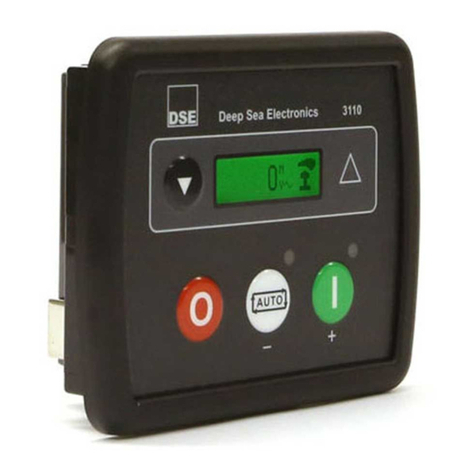
DEEP SEA ELECTRONICS
DEEP SEA ELECTRONICS DSEGenset DSE3110 Operator's manual
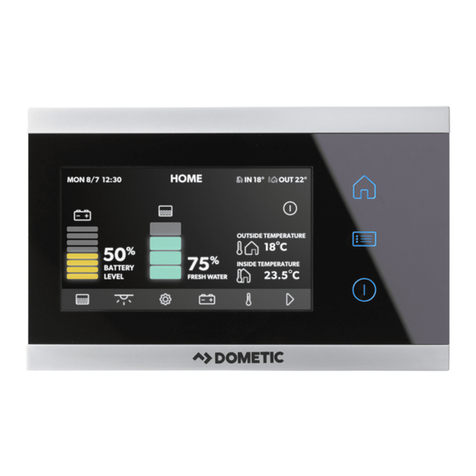
Dometic
Dometic Connect Panel operating manual
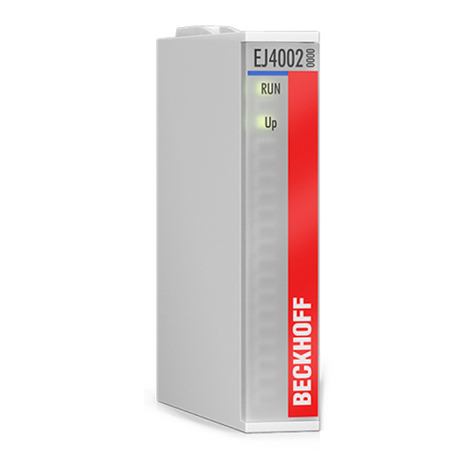
Beckhoff
Beckhoff EJ40 Series Documentation

Wine Guardian
Wine Guardian Pro DP25 Installation, operation and maintenance manual
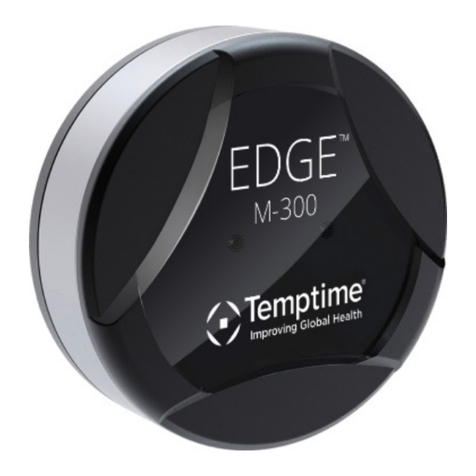
Temptime
Temptime EDGE M-300 user guide

Lenze
Lenze 9350 operating instructions
